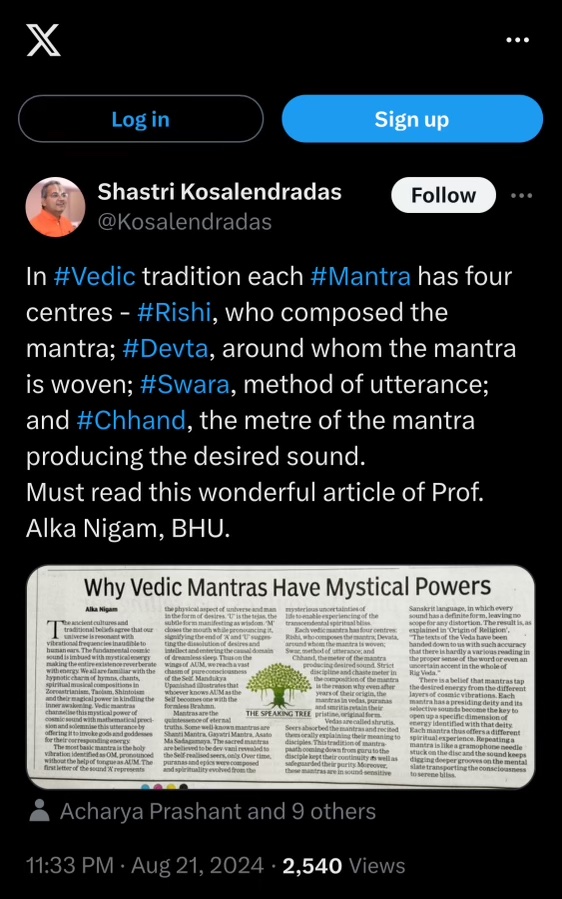https://www.speakingtree.in/blog/the-art-of-doing-nothing
‘Nothing’ in the present reference does not reflect even remotely any shade of grey. The word ‘art’ saves it from falling into the pitfalls of sentimentality, depression, angst, alienation. Rather the word ‘art’ becomes a savior and changes ‘nothing’ into a medicinal pill protecting it from the clutches of all these modern ailments. The transformation seems to be compressed into a magical Spanish word SOSEGADO that transports us to a tranquil way of life bringing wonders to mankind. Tired limbs are rested, agitated mind calms down and rejuvenated we turn afresh to the boisterous calls of life again. Taking a short break from the monotonous routine life, escaping into the ever-inviting serene cove of mother nature, shifting the nature of our work from dull to our pleasure filled hobbies– is the art of life that not only colours it, makes it buoyant, but also makes it full of substance by giving us time to delve deeper into ourselves. When the wisdom of choosing sosegado style of life trickles down into our mental system, we wonder with the poet W H Davies:
What is this life if, full of care
We have no time to stand and stare
The spectrum of ‘nothingness’ as concept however, is much deeper than the obvious. It is fathomless. Another key word akin to this appears in Brihadaranyaka Upanishad coined by sage Yagnavalkya. it is Neti- Neti. The doctrine of this analytical meditation negates everything that is not Brahman meaning Absolute Reality. A beautiful example of this concept is a short six-stanzas verse of an eight year old Shankaracharya. In five verses he denounces all that we associate with our body and mind because these are constantly in flux. Then he dismisses even the noble activities that spring from heart because obliquely these are linked with our ego. Thus all virtues and vices are chains -whether made of gold or iron nonetheless chains- hence denounced. After these exclusions there is an inclusion of a bold statement in the fourth line of each stanza ‘shivoham shivoham’— the hammer pounds on what really I am. ‘Neti Neti’ ultimately connects us with our intrinsic nature. This swyambhav is defined as adhyatma in the eighth chapter of Bhagwata Gita. When Arjun asks about its nature, Lord’s answer is uniquely simple – adhi means underlying, atma means soul. Paramhansa Yoganandaji explains it as the knowledge of an inherent link between “the underlying ‘universal soul’.…and the individual dream soul encased in a body….” Once this connection is realised the entire cosmos illuminates and begins vibrating with One Consciousness. ‘Nothingness’ turns into Oneness with everything. Man is a part of this Consciousness. In Chandogya Upanishad appears the story of Rishi Uddalaka who with the help of nine examples from day to day life reveals the same essence of the word ‘nothing’. When his son Swetketu, having learnt all the Vedas returns home, the rishi asks him if he knows that knowledge by which we know everything that we need to know. Swetketu expresses his desire to know about that knowledge. His father asks him to break open the seed of a banyan tree. There is nothing inside. The rishi with the help of this metaphor explains that the empty seed still holds the power to make a mighty tree because this subtle element ’nothing’ is the immortal Supreme Consciousness. Know your- self as a part of this subtle essence. ‘That art Thou’ is the ultimate wisdom of Upanishads. TAT TWAM ASI is also one of the four sutras picked up by the savants of Vedic rhetoric as the mahavakyas to guide us on the journey of the soul from nothingness to becoming a part of the Omnipresent Supreme.
In Buddhism ‘nothingness’ is Shunyavaad – a mental state in which nothing is added and nothing is taken away. Buddha believed in three factors of existence. Anicca (impermanence), Dukha (suffering) and Anatta (anatama). Buddha taught that soul too is impermanent like body. The illusion of Self is the cause of Dukh and a barrier to enlightenment.
Mysticism exalts ‘nothingness’ as a state of pure Consciousness reached by meditation that empties the mind. In this state that aspect of Reality surfaces that the emptied mind reflects. And this Reality is Formless Self that ultimately melts to become one with all-pervading Supreme Consciousness.

Leave a Reply